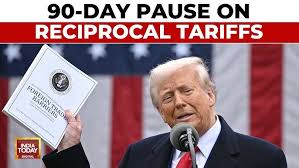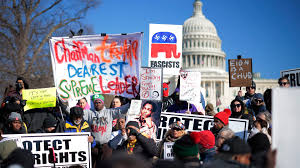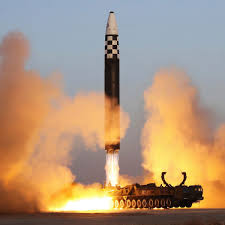In a move that has significant implications for businesses, consumers, and global trade, Trump pauses tariffs on certain goods, signaling a temporary shift in the administration’s trade policy. Tariffs, which are taxes imposed on imported goods, have been a cornerstone of former President Trump’s strategy to protect domestic industries, negotiate better trade deals, and exert economic leverage on global partners. Pausing tariffs, however, provides a temporary relief for industries affected by higher import costs and opens the door for renewed trade negotiations.
This article explores what it means when Trump pauses tariffs, the background of his trade policies, the economic and global implications, political reactions, and how businesses and consumers are affected. Understanding these dynamics is crucial for investors, policymakers, and the general public who are navigating the evolving landscape of U.S. trade policy.
What Does “Trump Pauses Tariffs” Mean?
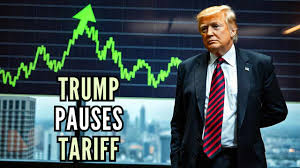
When we say Trump pauses tariffs, it refers to a temporary halt on the collection of import taxes on specific goods from certain countries. Tariffs are traditionally used to protect domestic industries by making imported goods more expensive, incentivizing consumers to buy locally produced products. Pausing these tariffs does not eliminate them permanently; instead, it provides relief to affected businesses and consumers while trade negotiations or other policy considerations continue.
Key Points About Tariff Pauses
- Targeted Goods: The pause usually applies to selected categories of goods, such as steel, aluminum, or specific Chinese imports, rather than a blanket suspension of all tariffs.
- Temporary Measure: A pause is generally temporary, giving industries breathing room and reducing immediate price pressures.
- Strategic Purpose: Pausing tariffs can also be a negotiation tactic, signaling goodwill to trade partners or easing tensions during trade disputes.
How a Tariff Pause Differs From Removal
- Pause: Temporarily halts tariff collection; tariffs can be reinstated.
- Reduction: Permanently lowers the tariff rate.
- Removal: Eliminates the tariff entirely, often requiring legislative or trade agreement changes.
Real-World Implications
- Businesses: Companies reliant on imported goods may see lower input costs, improving margins or allowing reduced consumer prices.
- Consumers: Pausing tariffs can ease inflationary pressures by preventing sharp increases in the cost of imported goods.
- Trade Partners: Foreign exporters benefit from continued access to U.S. markets without additional tariffs, which can improve bilateral relations temporarily.
Summary:
A situation where Trump pauses tariffs is both a strategic and economic decision, offering short-term relief to industries, potentially benefiting consumers, and creating space for ongoing trade negotiations.
Background on Trump’s Tariff Policies
Since taking office, former President Donald Trump implemented an aggressive trade strategy focused on protecting American industries and addressing trade imbalances, primarily through the use of tariffs. Tariffs, which are taxes on imported goods, became one of the central tools of his administration to influence both domestic and global trade.
Key Tariff Actions Under Trump
- Steel and Aluminum Tariffs (2018): Imposed a 25% tariff on steel and 10% on aluminum imports to support domestic producers and reduce reliance on foreign materials.
- Chinese Goods Tariffs: Targeted hundreds of billions of dollars in imports from China to address intellectual property theft, forced technology transfer, and trade imbalances.
- Automobile Tariffs: Proposed tariffs on imported vehicles to encourage domestic manufacturing, though many were delayed or paused.
Objectives Behind Tariffs
- Protect Domestic Industries: Shield American manufacturers from cheaper foreign competition.
- Negotiate Trade Deals: Use tariffs as leverage to secure better terms in trade agreements, such as the USMCA (United States-Mexico-Canada Agreement).
- Political Strategy: Tariffs were also a tool to demonstrate strong leadership in economic policy, appealing to domestic voters in manufacturing-heavy regions.
Previous Pauses and Adjustments
- Tariffs were occasionally paused to ease economic pressure on U.S. businesses or as a negotiation tactic with trade partners.
- For example, temporary pauses on certain Chinese imports allowed time for bilateral discussions without significantly disrupting supply chains.
Summary:
The context of Trump’s tariffs shows a combination of economic strategy and political maneuvering. Pausing tariffs fits into this broader pattern, offering temporary relief while maintaining leverage in ongoing trade negotiations.
Economic Implications of Pausing Tariffs

When Trump pauses tariffs, the decision has immediate and long-term effects on the U.S. economy, impacting businesses, consumers, and overall trade dynamics. Understanding these implications is critical for investors, policymakers, and industries reliant on imported goods.
1. Short-Term Economic Effects
- Reduced Costs for Businesses: Companies importing goods previously subject to tariffs can save on production costs, which may improve profit margins.
- Consumer Relief: Lower input costs can translate to stabilized or reduced prices for goods, alleviating inflationary pressures.
- Market Reactions: Financial markets often respond positively to tariff pauses, as they signal less disruption in trade and improved business predictability.
2. Long-Term Economic Effects
- Domestic Industry Protection: While pausing tariffs temporarily relieves cost pressures, the threat of reinstatement can maintain incentives for domestic production without permanently increasing prices.
- Investment Decisions: Businesses can plan more confidently, encouraging capital investment and expansion in manufacturing and supply chains.
- Trade Negotiation Leverage: Pauses can facilitate agreements that may have long-term economic benefits, such as increased exports or reduced trade disputes.
3. Impact on Key Industries
| Industry | Effect of Tariff Pause | Notes |
|---|---|---|
| Manufacturing | Lower raw material costs | Especially steel and aluminum-intensive |
| Agriculture | Potential for increased export opportunities | Reduces retaliatory tariffs from trade partners |
| Technology | Cheaper imported components | Supports competitiveness in electronics |
| Retail | Stabilized product pricing | Benefits both large retailers and consumers |
Summary
Pausing tariffs offers economic relief, reduces uncertainty, and provides breathing room for industries and consumers. However, it remains a temporary measure, with potential long-term effects dependent on trade negotiations and policy continuity.
Global Trade and Diplomatic Impacts
The decision when Trump pauses tariffs extends beyond domestic economics, influencing international trade relations, diplomacy, and global market stability. Tariffs are not just economic tools—they are also political instruments that affect negotiations, alliances, and the perception of U.S. trade policy worldwide.
1. Impact on Trade Partners
- China: Pausing tariffs can reduce tensions during trade negotiations, providing space for dialogue on intellectual property, trade balances, and technology transfers.
- European Union: EU exporters benefit from temporarily avoided tariff barriers, improving bilateral trade sentiment and reducing retaliatory measures.
- Other Countries: Nations affected by U.S. tariffs see relief in market access, allowing them to maintain export volumes and revenue.
2. Influence on Trade Negotiations
- Pauses often serve as strategic gestures, signaling goodwill to trading partners while maintaining the ability to reinstate tariffs if agreements fail.
- Example: Temporary pauses on Chinese imports have historically coincided with ongoing negotiation phases, encouraging compromise and mutual concessions.
3. Global Market Reactions
- Stock Markets: Tariff pauses tend to boost investor confidence, especially in manufacturing, technology, and agricultural sectors.
- Currency Markets: Strengthened trade optimism can influence exchange rates, affecting imports, exports, and international investment.
- Global Supply Chains: Businesses reliant on U.S. trade may adjust procurement strategies, anticipating either stability or renewed tariff threats.
4. Diplomatic Significance
- Pausing tariffs signals a flexible approach to trade disputes, improving U.S. standing in international negotiations.
- At the same time, it demonstrates the strategic use of economic policy as leverage, showing trading partners that the U.S. retains the ability to enforce tariffs if necessary.
Summary:
The decision to pause tariffs has broad global implications, affecting trade negotiations, market stability, and diplomatic relations. While temporary, it can influence long-term agreements and international perceptions of U.S. economic policy.
Political Reactions and Public Opinion
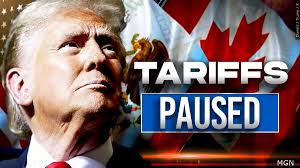
The announcement that Trump pauses tariffs sparked a wide range of political reactions, public commentary, and media coverage, reflecting the contentious nature of trade policy in U.S. politics. The decision was analyzed not only for its economic implications but also for its strategic and political motivations.
1. Political Reactions
- Supportive Views:
- Some lawmakers and industry leaders praised the pause, emphasizing that it relieves pressure on businesses and consumers.
- Republicans and trade-focused politicians argued that the move maintains leverage while avoiding immediate economic disruption.
- Critical Views:
- Critics, including some Democrats and economists, warned that pauses could be seen as inconsistent policy, creating uncertainty in long-term planning.
- Concerns were raised that tariff pauses might undermine the administration’s negotiation strength if viewed as a concession to foreign powers.
2. Public Opinion and Media Coverage
- Positive Sentiment: Consumers and small businesses welcomed the pause due to potential savings on goods and reduced inflationary pressures.
- Skeptical Sentiment: Analysts and the media highlighted that pauses are temporary fixes that may not address deeper trade imbalances.
- Media Framing: Coverage ranged from economic relief narratives to political strategy critiques, reflecting the polarized nature of U.S. discourse on trade.
3. Strategic Implications During Election Cycles
- Tariff pauses can also serve as political signals, demonstrating responsiveness to domestic economic concerns.
- Temporary relief can appeal to manufacturing-heavy states or industries most affected by trade policies, influencing public perception and voter sentiment.
Summary:
Political reactions to Trump pausing tariffs illustrate the balance between economic relief, strategic negotiation, and public perception. While some view it as a necessary adjustment, others criticize it as a temporary measure with limited long-term impact.
FAQs About Trump Pauses Tariffs
Here are some of the most common questions surrounding the decision for Trump pauses tariffs, along with detailed answers to provide clarity on the topic.
1. Why did Trump pause the tariffs?
Answer:
The pause was primarily aimed at reducing economic pressure on businesses and consumers while allowing more time for trade negotiations. It also served as a strategic gesture to trading partners, signaling willingness to cooperate without permanently giving up leverage.
2. How long will the tariff pause last?
Answer:
Tariff pauses are typically temporary and conditional. The exact duration depends on ongoing negotiations, industry needs, and political considerations. Some pauses last weeks, while others may extend for several months.
3. Will pausing tariffs affect consumer prices in the U.S.?
Answer:
Yes. Tariff pauses can stabilize or lower the cost of imported goods, which may ease inflationary pressures on products that rely heavily on foreign materials, such as electronics, automobiles, and household goods.
4. How do businesses benefit from a tariff pause?
Answer:
- Reduced Production Costs: Companies importing materials pay less in taxes, improving profit margins.
- Supply Chain Stability: Temporary relief allows for smoother operations and planning.
- Increased Competitiveness: Lower costs can translate into more competitive pricing for domestic and international markets.
5. Does this signal a shift in U.S. trade policy?
Answer:
While pauses can indicate flexibility, they do not necessarily signal a permanent shift. Pausing tariffs is often a short-term tactical decision within a broader trade strategy. The long-term approach still emphasizes protecting domestic industries and leveraging trade negotiations.
Summary:
Understanding these FAQs clarifies the economic, strategic, and political reasoning behind the decision when Trump pauses tariffs, helping businesses, consumers, and global stakeholders navigate the impacts.
Conclusion
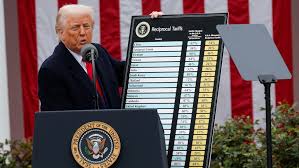
The decision when Trump pauses tariffs represents a critical intersection of economics, politics, and global trade strategy. By temporarily halting tariffs, the administration aims to provide relief to U.S. businesses, ease consumer costs, and maintain leverage in international negotiations.
- Economic Implications: Industries relying on imported goods benefit from lower costs and greater predictability, while consumers may see stabilized prices.
- Global Trade Impact: Trading partners experience reduced tension, which can facilitate negotiations and improve bilateral relations.
- Political Significance: The move has prompted mixed reactions, reflecting differing perspectives on short-term relief versus long-term strategy.
While a pause is temporary, its effects are multi-dimensional, influencing markets, industries, and diplomatic relations. For businesses, policymakers, and investors, understanding the context, objectives, and potential outcomes of pausing tariffs is essential for navigating the complexities of U.S. trade policy.
Key Takeaway:
Trump pausing tariffs is more than a policy adjustment—it is a strategic economic decision with far-reaching consequences for domestic industries, global trade relations, and political dynamics. Monitoring future developments in trade negotiations will be crucial for anticipating long-term impacts.
